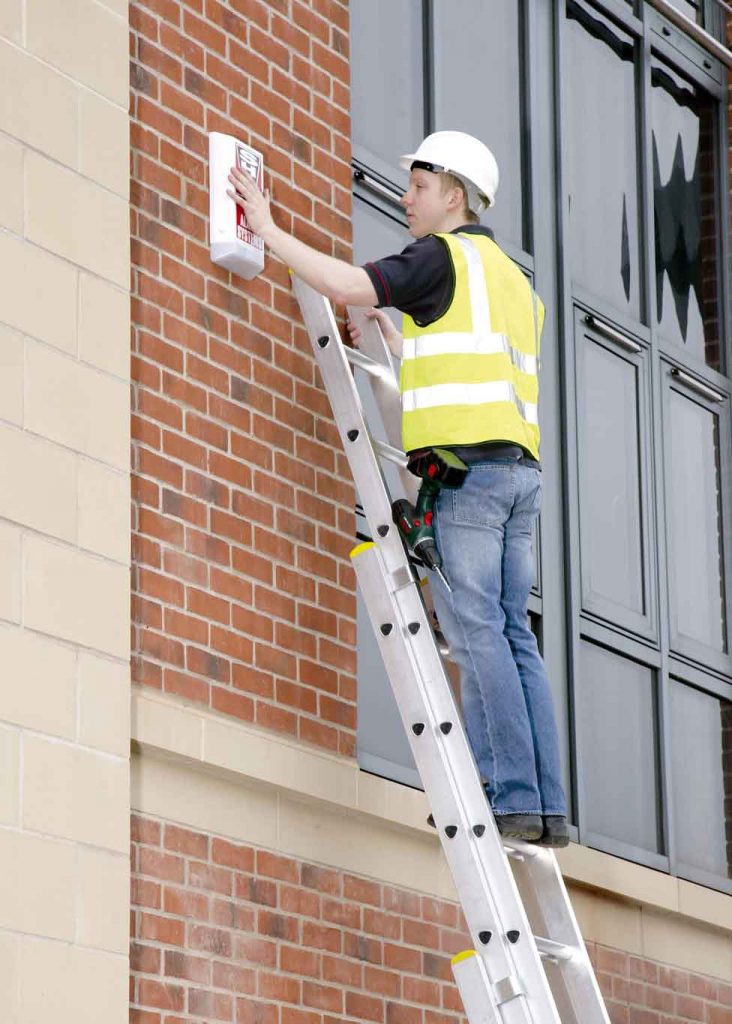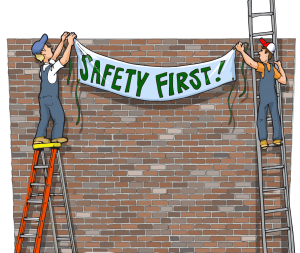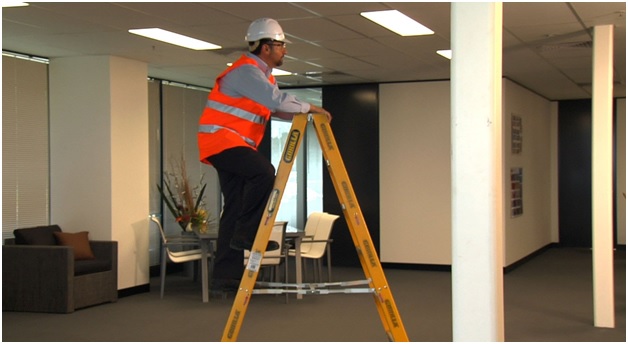If you are going to be working from an elevated position, or if you would need to go up or down a level or two without the use of conventional stairs, then a ladder is definitely the way to go. However, with the many makes and types of ladders to choose from, which one do you use?
There are lots of things that you would have to consider when choosing the right ladder for the job, and these would ensure that the work will be done efficiently, and that you will be safe from accidents and potential injury.
Importance of Choosing the Right Ladder
Safety
Choosing the right ladder is important to ensure the safety of the user. Using a ladder that is too long or too short may force you in an awkward and unbalanced position which would make the work that much harder. Worse, this might cause unfortunate accidents to occur.
Without proper locking mechanisms or the ability to grab onto a sufficient supports such as the floor or a wall, the possibility of falls or other types of accidents will definitely increase. Thus, choosing the right ladder for the environment and situation that you will be working on is certainly a must.
Productivity
Image source: www.bestbuymowers.co.uk
A person can only carry a certain number of items up a ladder, unless said person has a lot of pockets where in all items that they need actually fit. This does not apply to painters that have to work with a brush and a pocket of paint, of course. In times like these, choosing the right ladder is surely important.
Most ladders have a platform that can be pulled out so that items can be placed on it while you work. Some may even provide hooks so that tools and bags can be hung, leaving the user with free hands and so that they can better maintain their balance. Not only is this more safe, but throughput will definitely increase.
Criteria to Choose the Right Ladder
Height
Image source: www.ppconstructionsafety.com
Choose a ladder based on where you will be working. A foldable ladder is very versatile for numerous conditions as it can be set for varying lengths as well as different angles for better support.
On the other hand, extendable ladders can also be used for longer heights. However, a ladder should neither be too long or too short. As a rule, you should be able to reach the work area without stepping on the top three or four rungs.
Duty Rating
The duty rating of a ladder more or less defines how much weight it can safely carry. For instance, Class 1 ladders are design for industrial or heavy duty use, and can carry about 250 pounds or more. On the other hand, Class 3 ladders are intended for home use with light loads expected.
On the safe side, always choose a ladder with a higher duty rating. Of course, stronger ladders may also mean bigger weight, but this is a small price to pay if the consequence is having a ladder break under you.
Safety Features
Image source: wikiepedia.wordpress.com
For hinged ladders or for those with moving parts, locking mechanisms must be stable enough for you to be comfortable with. Wobbly ladders are definitely a sign of shoddy work so make sure to choose a ladder that locks properly.
Most ladders also have rubber or plastic base pads, which are attached to the bottom of the ladder. These reduce increase the friction against the floor, which reduces the incidence of the ladder slipping under you. Some ladders also have rubber pads along the sides for better wall support as well as protection against scratches along the wall surface.
Composition
It may seem like an oversight for some, but what your ladder is made of actually matters, especially if you are working around electricity. You should never use aluminum or steel ladders in an area where in you are exposed to electricity as you would risk electrical shock.
For areas where in danger of electric shock such as near power lines is possible, use ladders made out of non-conductive materials such as wood or fiberglass. Some manufacturers even offer ladders made out of rough plastic, which is safe for situations such as these.
Instruction to Choose the Ladder for Your Work
Know the Environment
Knowing the environment that you will be working on is absolutely integral. These include the height that you will need to reach, where you will be placing your ladder or leaning it against, and if they would be foot traffic along your work area.
With these factors, you can determine what type of ladder is best suited for the job. This also applies if you are going to be working indoors or outdoors, or if there are going to be sources of electricity around you.
Know Your Equipment
If you will be bringing equipment along with you up or down a ladder, determining your total weight load is integral as well. Along with the ladder’s duty rating, having features where you can set or hang your tools and other equipment is very much desirable.
Keep in mind that total load, in this case, speaks about not only the weight of the person using the ladder, but the things that he will be carrying with him as well. A proper review of your total weight load requirements against a ladder’s duty rating is as important as the design of the ladder that you will be using to perform your task.
Practice Safety at All Times
Image source: www.youtube.com
Regardless of the type of ladder that you choose, always practice safety procedures. If possible, wear a harness that you can hook into a stable support area such as a roof beam. Also, wear gloves, goggles, and other personal protection equipment.
Lastly, stay calm as getting surprised may cause you to lose your balance and suffer a nasty fall. With the right safety measures and the right ladder, you can be assured of safe work and a job well done.




